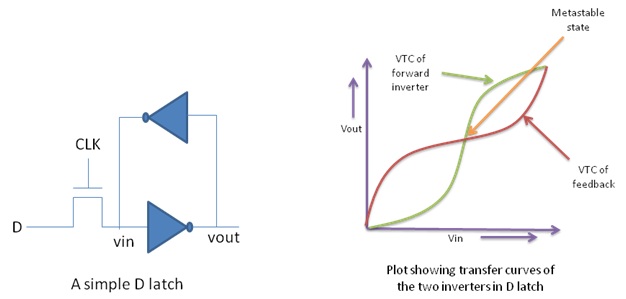All the sequential elements need some minimum pulse (either high or low) to ensure that the data has been captured correctly. In other words, clock pulse fed to a flop or latch (or any other sequential element) must be wide enough so that it does not interfere with correct functionality of the element. By correct functionality, is meant, the internal operations of the cell.
Minimum pulse width requirement: To understand minimum pulse width requirement, let us first define pulse width. Formally, pulse width can be defined as:
"If talking in terms of high signal level (high minimum pulse width), it is the time interval between clock signal crossing half the VDD level during rising edge of clock signal and clock signal crossing half the VDD level during falling edge of clock signal. If talking in terms of low signal level (low minimum pulse width), it is the time interval between clock signal crossing half the VDD level during falling edge of the clock signal and clock signal crossing half the VDD level during rising edge of the clock signal."
If the clock being fed to a sequential object has less pulse width than the minimum required, either of the following is the probable output:
- The flop can capture the correct data and FSM will functional correctly
- The flop can completely miss the clock pulse and does not capture any new data. The FSM will, then, lead to invalid state
- The flop can go meta-stable
All these scenarios are probable of happening; so, it is required to ensure every sequential element always gets a clock pulse greater than minimum pulse width required. To ensure this, there are ways to communicate to timing analysis tool the minimum pulse width requirement for each and every sequential element. The check to ensure minimum pulse width is known as "minimum pulse width check". There are following ways to ensure minimum pulse width through minimum pulse width check:
- Through liberty file: By default, all the registers in a design should have a minimum pulse width defined through liberty file as this is the format to convey the standard cell requierements to STA tool. By convention, minimum pulse width should be defined for clock and reset pins. Minimum pulse width is constrained in liberty file using following syntax:
- Through SDC command: We can also define minimum pulse width requirement through SDC command. The SDC command for the same is "set_min_pulse_width". For example, following set of commands will constrain the minimum pulse width of clock clk to be 5 ns high and 4 ns low:
set_min_pulse_width -low 4 [get_clocks clk]







